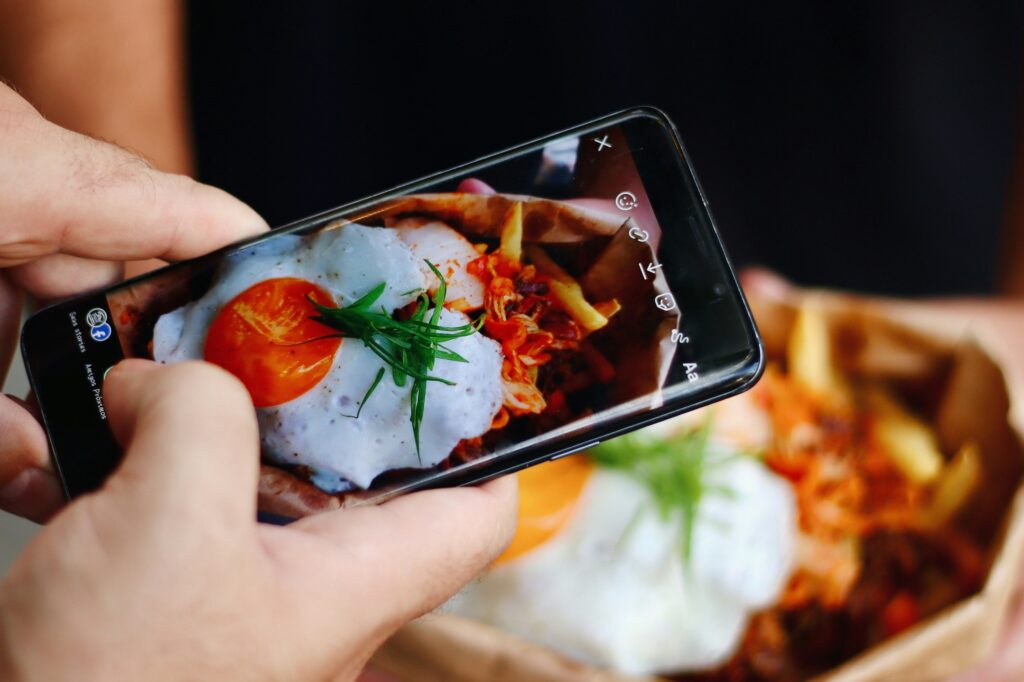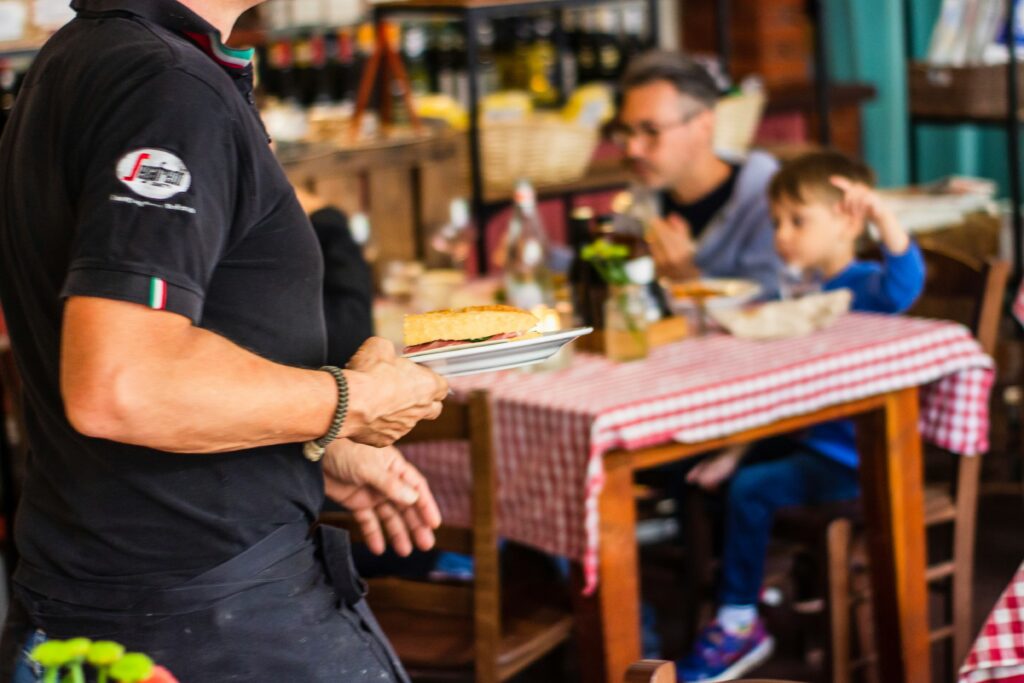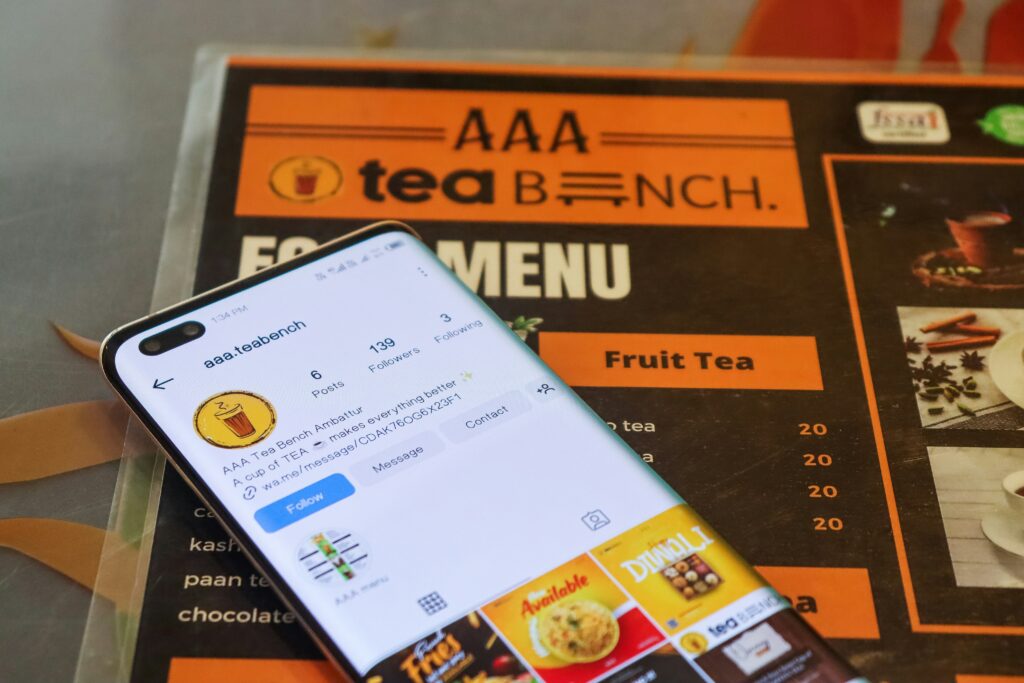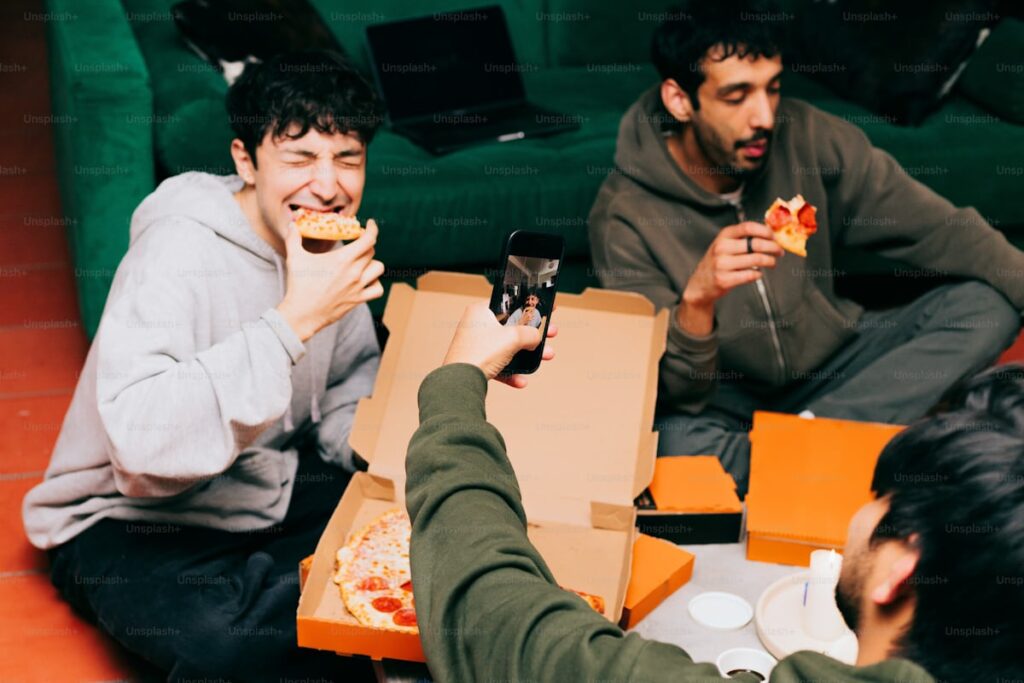Get Paid to Eat: 12 Legitimate Ways to Turn Your Love of Food into Income

You know that moment when your friend texts complaining about their soul-crushing office job while you’re literally getting paid to demolish a stack of pancakes?
Getting paid to eat sounds like the ultimate career fantasy, but it’s actually a legitimate earning opportunity that thousands of people have turned into real income.
My cousin Jake stumbled into this world when he started reviewing local restaurants on Instagram.
Two years later, he’s earning $3,000 monthly just from posting food content while maintaining his day job. The best part?
He eats better now than ever before and it’s completely tax-deductible as business expenses.
Food-related income opportunities have exploded with social media growth and the rise of the creator economy. Ready to discover how your appetite can become your paycheck?
Can You Really Get Paid To Eat Food?
Food industry economics create legitimate opportunities for people to earn money through eating, reviewing, and creating content around food experiences.
Market demand exists because restaurants, food brands, and content platforms need authentic reviews, photography, and promotional content that only real people eating real food can provide.
Income potential varies dramatically based on approach and commitment level. Casual food reviewers might earn $200-500 monthly, while professional food influencers generate $5,000-50,000+ per month.
Multiple revenue streams typically work better than relying on single income sources. Successful food earners combine reviewing, photography, writing, and social media presence for diversified income.
Realistic expectations matter because building food-related income takes time, consistency, and genuine passion rather than just an appetite for free meals.
12 Realistic Ways To Get Paid To Eat Food
These proven methods range from simple side income to full-time career opportunities, each requiring different skill levels and time commitments.
1. Become A Food Blogger
Food blogging transforms your dining experiences into valuable content that generates income through multiple monetization channels over time.

Content creation involves more than just eating. You write detailed reviews, develop recipes, share cooking tips, and create engaging stories around food experiences that readers find valuable.
Monetization strategies include advertising revenue through Google AdSense, affiliate marketing partnerships, sponsored posts, and selling digital products like recipe collections or meal planning guides.
SEO knowledge helps your content rank in search engines when people look for restaurant reviews, recipes, or food advice in your area.
Time investment typically requires 6-12 months of consistent posting before generating meaningful income, making this a long-term strategy rather than quick money.
Equipment needs include a decent camera for food photography, basic photo editing software, and reliable internet for content management and social media promotion.
2. Become A Freelance Writer
Food writing serves magazines, websites, restaurants, and food brands that need professional content about culinary topics, nutrition, and dining experiences.

Writing specializations include restaurant reviews, recipe development, nutrition articles, food industry analysis, and travel dining guides for various publications.
Client acquisition happens through freelance platforms like Upwork and Contently, plus direct outreach to food magazines and websites.
Rate structures range from $0.10-1.00 per word for articles, with experienced food writers commanding premium rates for specialized knowledge and quality work.
Portfolio building requires creating sample articles, building relationships with editors, and consistently delivering quality work that leads to repeat assignments.
Industry knowledge about culinary techniques, food trends, and restaurant operations helps writers create more valuable, accurate content that clients appreciate.
3. Become A Food Critic
Professional food criticism involves systematic evaluation of restaurants, dishes, and dining experiences for newspapers, magazines, and online publications.
Qualifications typically include culinary education, extensive dining experience, excellent writing skills, and objective evaluation abilities that separate personal preferences from professional assessment.
Employment options range from staff positions at publications to freelance criticism for multiple outlets, each offering different income potential and creative freedom.
Dining expenses often get reimbursed by employers, though freelance critics may need to cover costs initially and deduct them as business expenses.
Anonymity considerations affect how critics operate, with some maintaining secret identities to ensure authentic restaurant experiences during reviews.
Income potential varies from $30,000-100,000+ annually depending on publication size, geographic market, and critic’s reputation and experience level.
4. Start A Food YouTube Channel
Video content creation around food experiences can generate substantial income through advertising, sponsorships, and product partnerships with consistent audience building.

Content formats include restaurant reviews, cooking tutorials, food challenges, dining experiences, and “mukbang” style eating videos that attract different audience segments.
Monetization requirements include reaching 1,000 subscribers and 4,000 watch hours within 12 months to join the YouTube Partner Program for ad revenue.
Production quality matters significantly on YouTube, requiring good lighting, clear audio, engaging editing, and consistent branding to compete effectively.
Revenue streams expand beyond ads to include brand sponsorships, affiliate marketing, merchandise sales, and premium content subscriptions for dedicated fans.
Growth strategies involve consistent uploading schedules, engaging with comments, collaborating with other creators, and staying current with food trends and platform changes.
5. Start A Food Podcast
Audio content about food topics serves audiences during commutes, workouts, and other activities when video isn’t practical, creating unique engagement opportunities.

Episode formats can include restaurant interviews, cooking discussions, food history exploration, nutrition advice, and dining experience storytelling that keeps listeners engaged.
Startup costs remain minimal with basic recording equipment, free editing software, and podcast hosting platforms like Anchor or Buzzsprout.
Audience building takes time but creates loyal followings that attract sponsors willing to pay premium rates for targeted food enthusiast demographics.
Monetization options include sponsor advertisements, affiliate partnerships, premium subscriber content, and live event opportunities as audiences grow.
Guest networking with chefs, restaurant owners, and food industry professionals provides valuable content while building relationships that create future opportunities.
6. Write A Book Or eBook
Food publishing offers authors opportunities to monetize culinary knowledge through cookbooks, nutrition guides, restaurant guides, and food history books.
Self-publishing platforms like Amazon KDP eliminate traditional publishing barriers while allowing authors to retain higher profit percentages from sales.
Content development requires organizing recipes, writing clear instructions, creating appealing food photography, and developing unique angles that differentiate your book from competitors.
Marketing responsibilities include building author platforms through social media, guest appearances, book reviews, and promotional campaigns that drive sales.
Revenue potential varies widely, with successful food authors earning anywhere from hundreds to hundreds of thousands of dollars depending on topic appeal and marketing effectiveness.
Format options include traditional cookbooks, specialized diet books, restaurant guides, food memoirs, and digital recipe collections targeting specific audiences.
7. Take Photos Of Food
Food photography monetizes visual skills by selling stock photos, working with restaurants, and providing images for marketing materials and publications.

Stock photography platforms like Shutterstock and Adobe Stock pay royalties when people license your food images for commercial use.
Client services include restaurant menu photography, food brand marketing images, cookbook photography, and social media content creation for businesses.
Equipment investment requires good cameras, appropriate lenses, lighting equipment, and photo editing software to produce professional-quality images that sell consistently.
Styling skills help photographers arrange food attractively, understand lighting techniques, and create appetizing images that stand out in crowded visual markets.
Business development involves building photographer websites, networking with restaurants and food brands, and maintaining consistent quality that generates referral business.
8. Become An Influencer
Social media influence around food content can generate substantial income through sponsored posts, brand partnerships, and affiliate marketing relationships.
Platform selection affects earning potential, with Instagram, TikTok, and YouTube offering different audience demographics and monetization opportunities for food content.
Content consistency requires regular posting schedules, engaging with followers, staying current with trends, and maintaining authentic personality that builds loyal audiences.
Brand partnerships develop as follower counts grow, with companies paying $100-10,000+ per sponsored post depending on audience size and engagement rates.
FTC compliance requires clear disclosure of sponsored content and paid partnerships to maintain legal compliance and audience trust.
Audience building strategies include using relevant hashtags, engaging with food communities, collaborating with other influencers, and creating shareable content that goes viral.
9. Become A Restaurant Mystery Shopper
Mystery shopping provides paid opportunities to evaluate restaurant experiences while maintaining anonymity to ensure authentic service assessment.

Company registration with services like Market Force, BestMark, and Coyle Hospitality provides access to available assignments.
Evaluation criteria typically include food quality, service speed, staff friendliness, cleanliness, and overall dining experience that restaurants use for improvement.
Compensation structures vary from meal reimbursement plus small fees to hourly rates for evaluation time, depending on assignment complexity and company policies.
Detailed reporting requirements involve completing comprehensive forms about every aspect of the dining experience within specific timeframes after visits.
Assignment availability fluctuates based on location and seasonal demands, making this better suited for supplemental income rather than primary earning sources.
10. Get Paid To Taste Food
Professional food tasting involves evaluating products for manufacturers, restaurants, and food brands during development and quality control processes.

Taste testing roles include product development feedback, quality assurance evaluation, and consumer preference research for companies launching new food items.
Compensation methods range from hourly rates of $15-25 to per-session payments depending on testing duration and complexity requirements.
Health considerations may require eating foods you dislike or consuming unusual combinations, plus potential dietary restrictions during testing periods.
Application processes often involve screening questionnaires about taste preferences, dietary restrictions, and availability for regular testing sessions.
Location limitations restrict opportunities to areas near food testing facilities, typically urban centers with major food manufacturing or research operations.
11. Get Cashback For Food Purchases
Cashback applications like Ibotta, Rakuten, and Dosh provide rewards for restaurant dining and grocery purchases you’d make anyway.

Earning mechanisms involve scanning receipts, using linked payment cards, or purchasing through app portals to earn percentages back on food spending.
Optimization strategies include stacking multiple cashback apps, timing purchases with promotional bonus periods, and focusing spending on participating merchants for maximum returns.
Income expectations typically generate 1-5% back on food purchases, providing modest savings rather than substantial income generation.
Budget discipline becomes essential since cashback incentives shouldn’t encourage overspending beyond normal food budgets just to earn small percentages back.
Withdrawal options vary by platform, with some offering direct deposits while others provide gift cards or credits for future purchases.
12. Become A Competitive Eater
Competitive eating offers prize money and sponsorship opportunities for individuals who can consume large quantities of food quickly during organized contests.

Physical preparation involves training stomach capacity, improving eating techniques, and maintaining overall health despite consuming large food quantities during competitions.
Competition circuits include local contests, regional championships, and national events with prize pools ranging from hundreds to thousands of dollars.
Health risks include choking, stomach injuries, and long-term digestive issues that require careful consideration before pursuing competitive eating seriously.
Training requirements involve practicing with different food types, developing efficient eating strategies, and building tolerance for competitive pressure and time constraints.
Sponsorship opportunities emerge for successful competitive eaters who build recognition and can promote food brands through their competitive activities.
Ever wonder why some people seem to effortlessly combine their passions with their paychecks? They usually start by treating their interests as potential business opportunities rather than just hobbies.
Final Thoughts On Getting Paid To Eat Food
Food-related income opportunities exist across multiple industries and skill levels, from casual side earnings to full-time career possibilities.
Success requires treating food activities as legitimate business opportunities rather than just ways to get free meals or quick money without effort.
Income building typically takes 6-18 months of consistent effort before generating meaningful returns, making patience and persistence essential qualities.
Multiple approaches often work better than relying on single income sources, with successful food earners combining several strategies for diversified revenue.
Health considerations should always take priority over earning opportunities, especially with competitive eating or excessive food consumption for content creation.
The most successful people I know in food-related businesses started small, stayed consistent, and gradually built their expertise and audience over time. IMO, the key isn’t having the biggest appetite but rather the most strategic approach to monetizing your relationship with food 🙂
Which opportunity matches your current skills and interests? Choose one method and commit to building it properly rather than trying everything superficially.